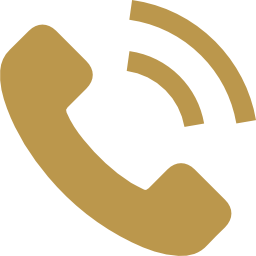Update to California Medi-Cal Laws
What are the new Property Limits for Californian who need to apply for Medi-Cal.
There are 3 significant changes to the Medi-Cal property limit. Up to June 30, 2022, the asset limit for a single person was $2,000.00. As of July 1, that limit was raised to $130,000.00 and as of Jan 1, 2024, there will be no asset limit at all.
Exempt assets such as a home and a car are not included in the property limits. Other exceptions apply, and income rules still apply to applicants. There are no changes proposed in the transfer rules, although such changes would be likely.
The asset limits for married couples and for spouses where one spouse needs nursing home care have increased as well
If I use Medi-Cal to pay for care, especially for nursing home care, can Medi-Cal take my property after my death?
The Medi-Cal Estate Recovery law in CA has become much better for families, as of January 1, 2017.
What is Medi-Cal Estate Recovery?
When a patient, (generally over age 55) uses Medi-Cal, to pay for the cost of his or her medical care, the State is entitled to be reimbursed for those costs from the patient’s assets after death.
This payback is known as a “Medi-Cal Estate Recovery Claim”, which means that any property owned by the deceased patient first, has to be used to pay back the California Department of Health Care Services, before any inheritance passes to an heir or relative. But there are broad exceptions to this law.
What are the changes?
The new law makes four key changes:
1. For persons dying after January 1, 2017, only assets in the person’s “Probate Estate” are subject to recovery. This means that upon your death, any of your assets which are held in a Trust, or in joint tenancy, or in accounts which are distributed upon death by survivorship or by beneficiary designation, cannot be claimed by the State.
2. Recovery is completely prohibited from the estate of a deceased Medi-Cal patient who is survived by a spouse, registered domestic partner, a minor child or a disabled child. Previously, there was estate recovery on assets that the widow(er) inherited, or limits on the protections for disabled or minor children.
3. In a fairly rare situation where the heirs are subject to a lien on their inheritance, the interest rate on the lien has been clarified, and the rate cannot exceed simple interest at 7 percent per year.
4. A claim against a home of modest value shall be waived based on a hardship application and exemption. Modest value means a home whose fair market value is 50 percent or less of the average price of homes in the county where the homestead is located, as of date of the decedent’s death.
What do these changes mean?
Mostly they mean that a Medi-Cal patient in nursing home who owns a home at death, can save that home to leave to heirs and family instead of the previous situation where it might have been necessary for the heirs to sell the home in order to repay the claim of the State of California for the care that the deceased parent received.
How does this change in the law help me and/or my disabled family member?
If parents need to use Medi-Cal to pay for their own care in a nursing home, their options to leave their home, to their child or to the child’s Special Needs Trust are improved in three ways:
1. If a child refuses to be evaluated for disability, or cannot prove that he or she is disabled, under the new law, parents can still save the home for a non-disabled child.
2. California Department of Health Care Services previously applied the waiver only to help the disabled child, and not to any non-disabled siblings. Now, the law is clear that if there is any disabled child, there can be no claim against anyone.
3. One can avoid Estate Recovery by doing routine estate planning, and so there is less need to prove specific hardship in order to avoid a claim.
Does this new law mean that my child is completely protected if I have to go to a Nursing Home?
NO. There is still some risk for parents who want to leave an inheritance for their child.
The risk is this, if a parent has to go to a nursing home, any life savings may have to be completely spent down to $130,000.00. [or for a couple the limit is $195,000.00 or $278,620.00 depending on circumstances], before the parent can qualify for Medi-Cal to cover the monthly cost of $14,000.00 or more for his or her nursing home care.
Until at least December 31, 2023, some or most of the parent’s funds which have been saved for the child or earmarked for a Special Needs Trust may be depleted to pay for the cost of the parent’s care.
However, this may change: California has proposed that the asset limit will be totally eliminated as of January 1, 2024. The state is waiting for federal approval of this change to the Medi-Cal rules, but it is likely to change.
Further, after the effective date of “Proposition 19, on Feb. 16, 2021, most parents who plan to leave a residential property to their disabled child to have a residence for life, will probably not be able to protect the parent’s favorable property tax assessment rate. NOTE; this reassessment problem is generally not applicable to a reverse mortgage held by the parents during their lifetime.
In planning for Long Term Care, note also most Board and Care or Assisted Living Facility care is not covered by Medi-Cal.
At minimum, to plan for the best outcome, the parent should have a sophisticated Durable Power of Attorney for Finances, to allow a trusted representative, other than the child, to engage in Two-Generation Estate and Medi-Cal planning, if the elder becomes incapacitated.
What should I do to protect myself or my family from Medi-Cal Estate Recovery?
If you or a family member use or might ever use Medi-Cal covered inpatient nursing home or home care services, you should:
1. Review the name or title on all property, including real estate, bank accounts and brokerage accounts, especially any assets held in joint tenancy and balance factors such as: tax, community property, control and Medi-Cal estate recovery to determine the best result.
2. Review every life insurance policy, annuity, IRA, Retirement plan to be sure that there is a named designated beneficiary, and alternates.
3. Be sure you have an adequate estate plan, including a broad Power of Attorney for Finances and if appropriate, an effective and properly funded Living Trust.
3. If any document(s) is not adequate, you or any involved family member should make a new one while the maker has mental capacity to understand and sign such a document.
4. Note some pitfalls:
a. It is very common that homeowners who refinanced their homes, were required to remove the home from their Trust, and the house was never retitled back into the name of the Trust.
b. It is also very common that “Do-It-Yourself” Trusts have not been properly funded.
Does this mean that I should give away my home or my property to protect against a Medi-Cal estate recovery?
NO, transferring assets is generally not a good strategy for either qualifying for Medi-Cal or avoiding the Medi-Cal estate recovery claim. There are significant disadvantages to transferring property. Each situation needs to be evaluated individually, and generally there are much better options.
How can I find out if my family is at risk for estate recovery?
The new law requires the state to provide a current or former beneficiary or their authorized representative a copy of the amount of Medi-Cal expenses that may be recoverable. There is a $5.00 fee for this, and information how to request this is found at: https://www.dhcs.ca.gov/services/Pages/TPLRD_ER_cont.aspx
Free 15 Minute Consultation
 Law Office of Patricia Tobin
Law Office of Patricia Tobin
835 Fifth Avenue
San Rafael, CA 94901 Telephone: 415 847-0547
Telephone: 415 847-0547 Fax: 1-415-785-5513
Fax: 1-415-785-5513

